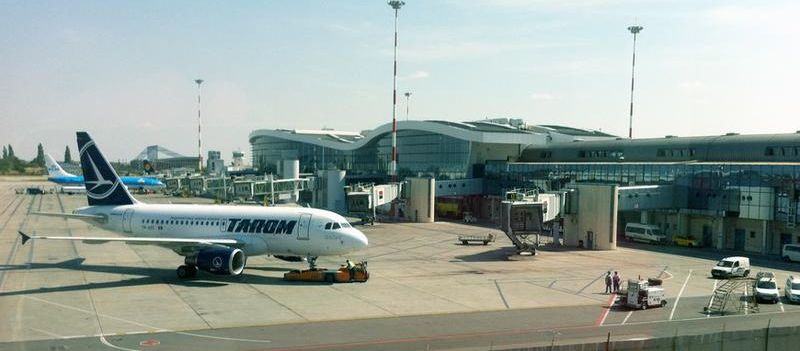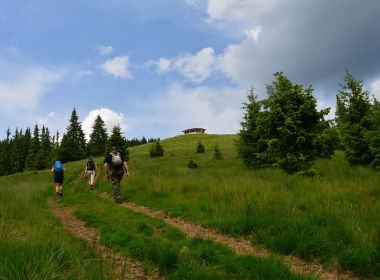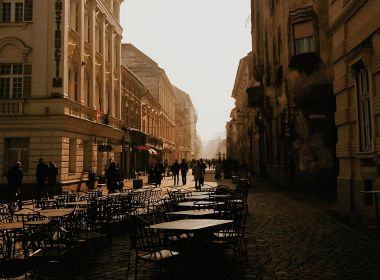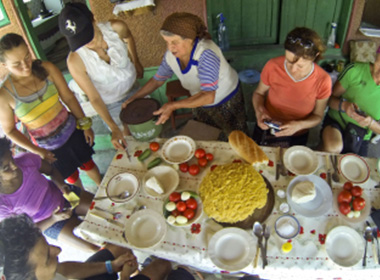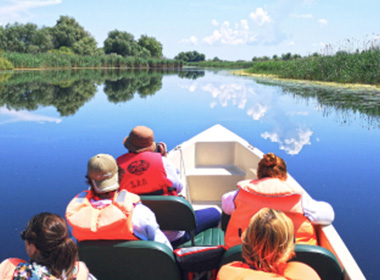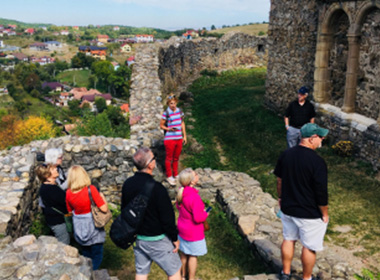So, you’re thinking of visiting Romania in 2025, eh? GREAT choice! Locals in Romania are very excited to welcome you. :)
If you're looking to travel to Romania and find out what's the best way of getting here and what transport options you have - this article is for you. Romania is easily accessible from the main cities in Central Europe, so you'll learn about flights and Romanian airports in Transylvania, entry points by car or train, convenience of travel, costs and more useful tips that will make your trip planning easier, cheaper and stress-free!
We highly recommend you also check our complete travel guide for visiting Romania to get more practical info on how to plan your holiday here. Or our blog on the best things to do in Romania to get inspiration from locals!
Table of contents
- 1. Why visit Romania?
- 2. Practical info for traveling to Romania
- 3. When to go
- 4. Safety and precautions
- 5. Money-saving tips
- 6. Booking resources
- 7. Flying to Romania: lots of options & cheap!
- 8. Main airports in Romania
- 9. Practical info for your flight to Romania
- 10. Air travel across Romania
- 11. Driving to Romania - an Eastern European road trip!
- 12. Border crossings by car into Romania
- 13. What to expect on your way to Romania
- 14. Police encounters
- 15. Renting a car in Eastern European countries
- 16. Some facts before your car trip
- 17. Trains to Romania & free sightseeing!
- 18. Visiting Romania by train
- 19. Taking a bus or coach to Romania
- 20. Visiting Romania by bus
- Conclusion
The first thing you should know is that travelling in Eastern and Southern Europe isn't as easy as in Western Europe because of weird or difficult-to-pronounce names, lots of alphabets (Latin - Cyrillic - Hellenic) and cross-border travel info that's harder to find in English or updated and is sometimes unreliable or old. Transport infrastructure isn't as developed too, with fewer highways and old trains running on railways built by the communist regimes in the regions.
If you're looking to visit more than one country in the region, you will need some serious planning. But if you're planning to travel only to Romania then your choice on how to get here will depend mainly on how much time you want to spend on your holiday traveling, budget and what kind of experience you’re looking for: just get me here or I want an adventure!
Here you'll find the essential info on how to get to Romania, the pros and cons of each option, and a few reasons why Romania deserves a spot on your bucket list.
1. Why visit Romania?
Before we get into the 'how' of getting to Romania, let’s start with the 'why'.
Romania is a large country packed with natural beauty, history, and culture. From a lot of hiking trails that would take at least three months to fully explore, to countless castles, painted monasteries, and the unforgettable Orthodox Metropolitan Cathedral in Timisoara, there’s something here for every traveler.
For a unique adventure, the Danube Delta is a must-visit. As a UNESCO World Heritage Site, it’s a bird-lovers paradise, where vibrant colonies flock from as far as China and Africa. And if you are so close, why not hit up the Black Sea resorts like Vama Veche and Mamaia?
BONUS:Since we are talking about transport options and other practical information, you should know that you can also book a Danube cruise through Romania to admire the natural wonders, from the Danube Gorges all the way to the Danube Delta.
You can also discover charming mountain towns like Brasov with its many hotels, restaurants, and impressive landmarks, or step back in time in Sighisoara, the only inhabited medieval citadel in Europe, with its historic Clock Tower. And of course, castle-hop between Bran Castle (aka Dracula Castle), Peles Castle, and Corvin Castle for that fairytale fix.
To dive into traditional culture, you can explore our famous painted monasteries and wooden churches. There’s so much to see in Romania’s cities and countryside that you won’t get through it all in one trip. And that’s the beauty of it. Take your time, come back often, and let us guide you to something new each time.
2. Practical info for traveling to Romania
Let’s make your trip to Romania a whole lot easier with some practical tips you’ll want to know before you fly in and start city-hopping. Romania might not have been a top pick for international travelers before, but trust us, things are changing, and it’s becoming a must-see.
3. When to go
While Romania is an awesome year-round destination, the best time to visit really depends on what you’re into. Summer (June to August) is peak season, with warm weather and long days, perfect for hitting up Romania’s outdoor spots. Spring (April to May) and fall (September to October) are also fantastic, with mild temps and fewer crowds. Winter (December to February) might be the quieter season, but it’s ideal for exploring Romania’s cities, museums, and indoor attractions.
4. Safety and precautions
Romania is a safe place to visit, but like anywhere, a few precautions go a long way. Stay aware of your surroundings, especially in busy areas or popular tourist spots, and keep an eye on your stuff. Avoid walking alone in dark or isolated spots at night, and stick to reputable taxis or ride-sharing services (Uber, Bolt). Also, watch out for pickpockets in crowded areas.
5. Money-saving tips
It’s easy to save money while traveling in Romania, but there are even more ways to stretch your budget. Try visiting during the shoulder season (April to May or September to October) when prices are lower. Look out for deals on flights and accommodations, and consider staying in a hostel or Airbnb instead of a hotel.
Get around with public transportation instead of taxis, and grab meals at local spots or street food stalls to avoid tourist prices.
6. Booking resources
There are many resources available for booking flights, accommodation, and activities in Romania. Some popular options include:
- Skyscanner: A flight comparison website that allows you to find the cheapest flights to Romania.
- Booking.com: A hotel booking website that offers a wide range of accommodation options in Romania.
- Airbnb: A platform that allows you to book unique accommodation options, such as apartments and villas, in Romania.
And for activities, just tell us what you’re interested in, whether it’s visiting a fascinating history museum, exploring a wooden church, or joining one of our many awesome walking tours for a truly authentic experience.
7. Flying to Romania: lots of options & cheap!
I’ll start with this because it’s by far the quickest and cheapest way to travel to Romania. Why?
There are more than 5 low-cost carriers flying on 7 Romanian airports spread all over the country from more than 60 locations in Europe! And that’s not including the typical major airlines flying on Bucharest Otopeni (the main international airport). Austrian Airlines, Turkish Airlines, Wizz Air, British Airways, and Ryanair are just some of the different airlines offering non-stop flights to Romania.
The reason for this is that there are almost 3,5 million Romanian expats most of them living in Western European cities. So lots of Romanians going home or families visiting them means flights to/from Romania (especially with low-cost carriers) are always 50-75% full. And during major Orthodox holidays they're fully booked - so be sure to book yours in advance.
The largest airport in Romania is Bucharest Henri Coanda International (official website) located in Otopeni (20 km North from Bucharest, 140km away from Brasov) where you have the usual selection of international airlines: Lufthansa, British Airways, Air France, KLM, etc.
Local tip:Check our guide on Bucharest airport to find out more about navigating the airport, getting a taxi to Bucharest city center and more.
The Romanian national airline is Tarom which operates around 30 routes in Europe, Africa and the Middle East and internal flights in the country. Last time we've been with them ticket prices were similar to those of major airlines and flight conditions were decent.
The main low-cost carriers in Romania are WizzAir, and RyanAir which operate many routes from European cities to Romanian airports all over the country. Some also have internal flights. Make sure to check their websites to see which days they fly and how this fits with your plans to visit Romania.
Local tip:Most low-cost carriers regularly run discounts on tickets to Romanian airports and when they introduce a new route to our country they offer REALLY cheap prices - €40 for a round trip!
Now, you can even catch direct flights from the United States to Romania! The most popular route is from New York's John F. Kennedy Airport to Otopeni Airport, located near Bucharest, and the flight takes about 11 hours.
8. Main airports in Romania
There are airports in Bucharest, Cluj-Napoca, Timisoara, Sibiu, Iasi, Bacau, Craiova, Suceava and Oradea. There are lots of flights from the UK, Spain, Italy, Germany and other major cities in Western Europe. On average, flight time is about 2-3h. So you're spoiled for choices, especially if you want to visit Transylvania!
Prices for low-cost flights start from as low as 15€ per way and usually range between 60 - 120€ for a round trip. Beware around major holidays - lots of Romanians living abroad come home so expect higher prices and full flights. Other than that - the best time to visit Romania is during March - October.
- European cities with most connections: London, Manchester, Dublin, Brussels, Rome, Milano, Torino, Madrid, Barcelona, Paris, Frankfurt - Koln area, Munich, Hamburg;
- Romanian cities with international airports: Bucharest, Cluj-Napoca, Timisoara, Craiova, Sibiu, Oradea, Iasi, Suceava
- Low-cost carriers flying to Romania: Wizz Air, RyanAir.
Make a list of the top things you want to see and do while in Romania; that way, you can pick the best city to fly into.
Bottom line - flying to Romania is the best way to travel to our country. Whether you're planning a city break, an extended holiday or even traveling in the region, flying here will save you precious time and there are many ways you can find cheap flight tickets. This way you can focus on planning your trip and spend your budget exploring our country and having a good time!
9. Practical info for your flight to Romania
When packing for a trip to Romania, medium-sized suitcases and a backpack are ideal. Big enough to fit all of your essentials, but not so large they're difficult to carry around, especially if you're planning to go in the countryside or the mountains. Plus, a medium-sized suitcase will fit in the overhead bin on most planes. If you are traveling with a carry-on only, pack light with your essentials. Everything else you can buy here from the usual retail brands or if you go to a shopping mall.
10. Air travel across Romania
If you’ve touched down in Bucharest but also want to explore another major city that’s a few hundred kilometres away, like Cluj-Napoca, and you’re short on time, booking a flight is your best bet.
It’s definitely more expensive than the train, but it can save you a lot of time, which is key if you’re on a tight schedule. For the best prices, try to plan your trip in advance and book your ticket early to lock in a better deal.
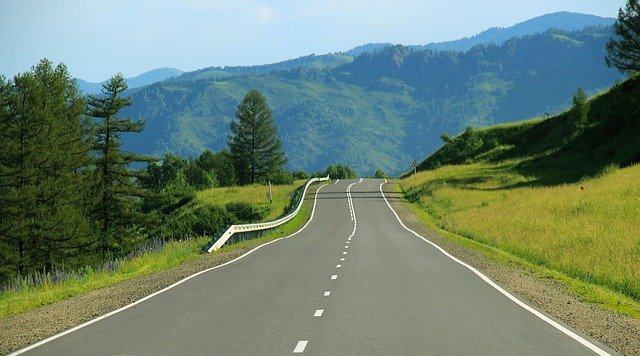
11. Driving to Romania - an Eastern European road trip!
If you’re a fan of the roads, enjoy a driving challenge and want to experience some scenic routes along the way – drive your way to Romania! I've personally done various road trips from here to neighbouring Bulgaria, Serbia and Hungary, and as far away as Germany, Austria, Czech Republic, Croatia or Greece.
The main roads in the region are generally good and linking with Romania is easy, but some routes are quite heavy on traffic. Google Maps and Waze offer accurate info and will be your trusted friends for navigating these parts.
12. Border crossings by car into Romania
Border crossing points are located all over Romania's land borders - for a full list, map & real-time info on waiting lines and important notices, check the official website of Romanian Traffic Police here. If you're entering Romania from the Western border, consider stopping for 1 night in Oradea or Timisoara.
After the 2015 refugee crisis in Europe, standard verifications were reintroduced so expect a routine check from border control agents. You need to have your ID ready and sometimes open your trunk.
There will be 2 checkpoints - when exiting a country and entering a new one, but this shouldn't take more than 30 min - 1 hour, depending on traffic. Again, beware of major holidays when expats come home!
Once you enter Romania, you'll need a vignette (road tax), which is electronically linked to your license plate. You can purchase it at small kiosks right after crossing the border, at most gas stations, or you can buy one online.
13. What to expect on your way to Romania
The roads leading to Romania are in very good condition and relatively easy to navigate. When not on highways, expect some reckless drivers here and there, lots of trucks, the odd horse cart, bikers and village folk walking on main roads. If you’re an experienced driver under regular conditions (aka not tired), pay attention and stay out of risky situations, you’ll be fine.
Be prepared for road congestion on many popular routes during weekends or holidays, which may take up a lot of your time and lead to an additional cost on gas.
14. Police encounters
Police in the region - that's a tricky one: some know English, some don't.
If you get pulled over, stay in your car until an officer comes to your window, and prepare your driver's license, vehicle identification document (registration) and your ID. Also, have the car's insurance on hand.
The speed limit on highways is usually 130 km/h and on standard E-marked roads 110 km/h, but be sure to check road signs. Popular gas stations: Shell and Mol (Hungary), Lukoil, Petrom, Rompetrol (Romania), Nis (Serbia), OMV (Romania+Bulgaria).
15. Renting a car in Eastern European countries
Driving in Eastern Europe is a great way to discover the culture of the region and see local life outside of major cities - guaranteed to surprise you!
We recommend doing some research and advance planning to get your geography right: people in Eastern Europe are very proud of their origins and don’t like it when their nationalities get confused by visitors. It might be confusing at first with so many small countries, but it's also a way of respecting the locals, particularly if you're asking for help, a meal or accommodation.
As always, when it comes to renting a car there are lots of local and international companies to choose from. In my experience, the big, popular brands are not always well-serviced in smaller countries so what I do is use a search engine like Discover Cars to compare prices, cars and companies before making a choice.
I don't know about you but for my peace of mind, I like to get full insurance on my rental car! For an extended stay in Romania, you can always ship a car which can save you some money in the long term.
So, if you’re considering an Eastern or Southern European road trip I think it's a great travel experience to have that will open your eyes to this lesser-known part of the world!
16. Some facts before your car trip
We’re not trying to alarm you, but it’s good to know all the details before choosing your way to travel.
Romania’s roads aren’t the best (but not the worst either!), and there’s definitely room for improvement with infrastructure. Unfortunately, Romania also has the highest number of road accident deaths in the EU.
This is due to several factors: some drivers can be aggressive, enforcement against using phones while driving isn’t strict at all, and certain roads lack adequate signs and infrastructure.
- If you’ve got a specific destination in mind, like getting from Brasov to Viscri, but public transport won’t take you there, just let us know, and we’ll handle it! Our guide will meet you, take you to Viscri, share all the must-know info, and give you a fantastic intro to Romanian culture before bringing you back to your hotel.
17. Trains to Romania & free sightseeing!
Finally, if you don’t feel like driving, but still want to see some scenic landscapes and have an Eastern European experience – why not travel by train?
You can find direct trains to major cities in Romania from Vienna, Budapest, Belgrade, Sofia, Thessaloniki and Istanbul which either stop in border cities like Oradea and Timisoara or head to Bucharest.
Romania is highly accessible and well-connected to main cities in Western and Central Europe, making it an affordable and less crowded alternative for tourists seeking unique experiences.
There’s also the famous Orient Express train ride which runs from Paris to Istanbul and stops in Romania in Sinaia to visit Peles Castle and in Bucharest.
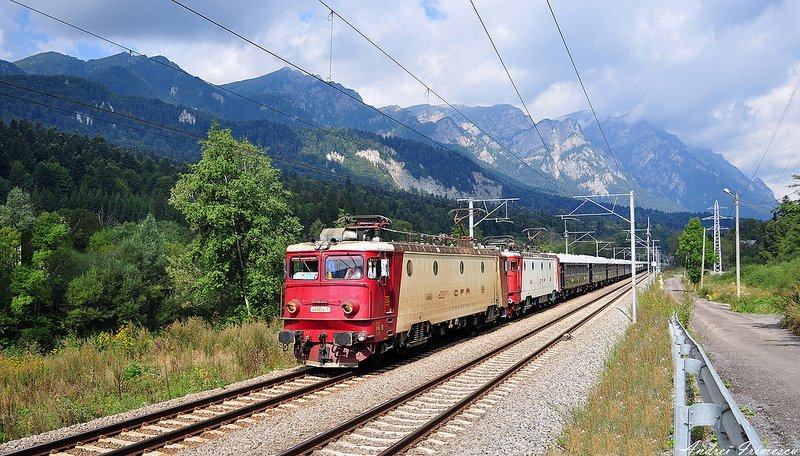
The regular train routes like Viena/Budapest - Bucharest pass through several major cities in Romania (Oradea, Cluj, Brasov) so that's a good option to consider for getting to Romania. The train from Bucharest to Istanbul is operated by the Bulgarian National Railway so you have to look there.
The Romanian National Railway Company - CFR (website) operates a route Bucharest - Sofia - Thessaloniki (Salonic) usually during the warm season. Interrail and Trainline sell train tickets to Romanian cities from European destinations - check them out!
Most of these cross-country trains in Eastern Europe operate with 1-2 hour delays and travel at low speeds, which makes a journey with them quite long (10+ hours). Prices range from 40-80€ one way depending on travel conditions and distance.
Double-check timetables (online + call the departure train station) and pack enough books + food. Travel conditions inside them are fair and decent, though they might look old and unkept. They're generally ok, clean and safe and offer free sightseeing!
As far as I know, using an Interrail pass to navigate Eastern Europe doesn't bring a lot of advantages since many of these cross-border trains run only during the Summer season and their prices are cheaper if bought on the spot or with some time in advance directly from the operating companies.
18. Visiting Romania by train
This is hands-down the comfiest way to travel, and that happens because there's no traffic to worry about! But, it’s only really an option for getting between main cities. Still, keep in mind that Romanian trains are a bit on the older side, and delays do happen. Even so, sometimes trains are still your best bet.
You can check the train schedule and book your train ride here. You can even catch trains operated by private companies.
19. Taking a bus or coach to Romania
The last option on the list and, unfortunately, the one I know little about, is travelling to Romania by bus. The cities and capitals of Eastern European countries are connected by bus routes, but you will need to research them locally and double check on departure times and prices.
One thing I can tell you is that FlixBus is operating routes in Romania and another major bus line operator is Eurolines. Taking the bus might be a solution for short distances, but on longer routes such as Bucharest - Sofia or Budapest - Cluj-Napoca expect around 8-12 hours on the bus, depending on traffic.
20. Visiting Romania by bus
There are several companies offering bus travel options for visiting Romania. It’s a reliable choice, but if you're taking a popular route, be prepared for traffic congestion, just like you’d experience with a personal or rental car.
One big perk of taking the bus is that it goes straight into the city center, a huge plus if you’re aiming to explore the main attractions. And if you're heading between towns or to small villages, a maxi-taxi is often a better bet than the train, which can be crowded or run on an inconvenient schedule.
Plus, small villages usually don’t have train stations, so the bus or maxi-taxi will get you closer to where you want to be.
Conclusion
So that's it - I hope this article on different ways to travel to Romania was helpful for planning your trip here. You should also check our local guide on getting around Romania to see how to navigate our country which is the largest in the region! For more travel tips also check out the 10 things you should know about visiting Romania.
If you're looking for inspiration on what to visit and to, have a look at our handpicked tours in Romania or our list of 'must see' sights of Transylvania. If you still need help - drop us a line!
Your Romanian Friend,
Marius
